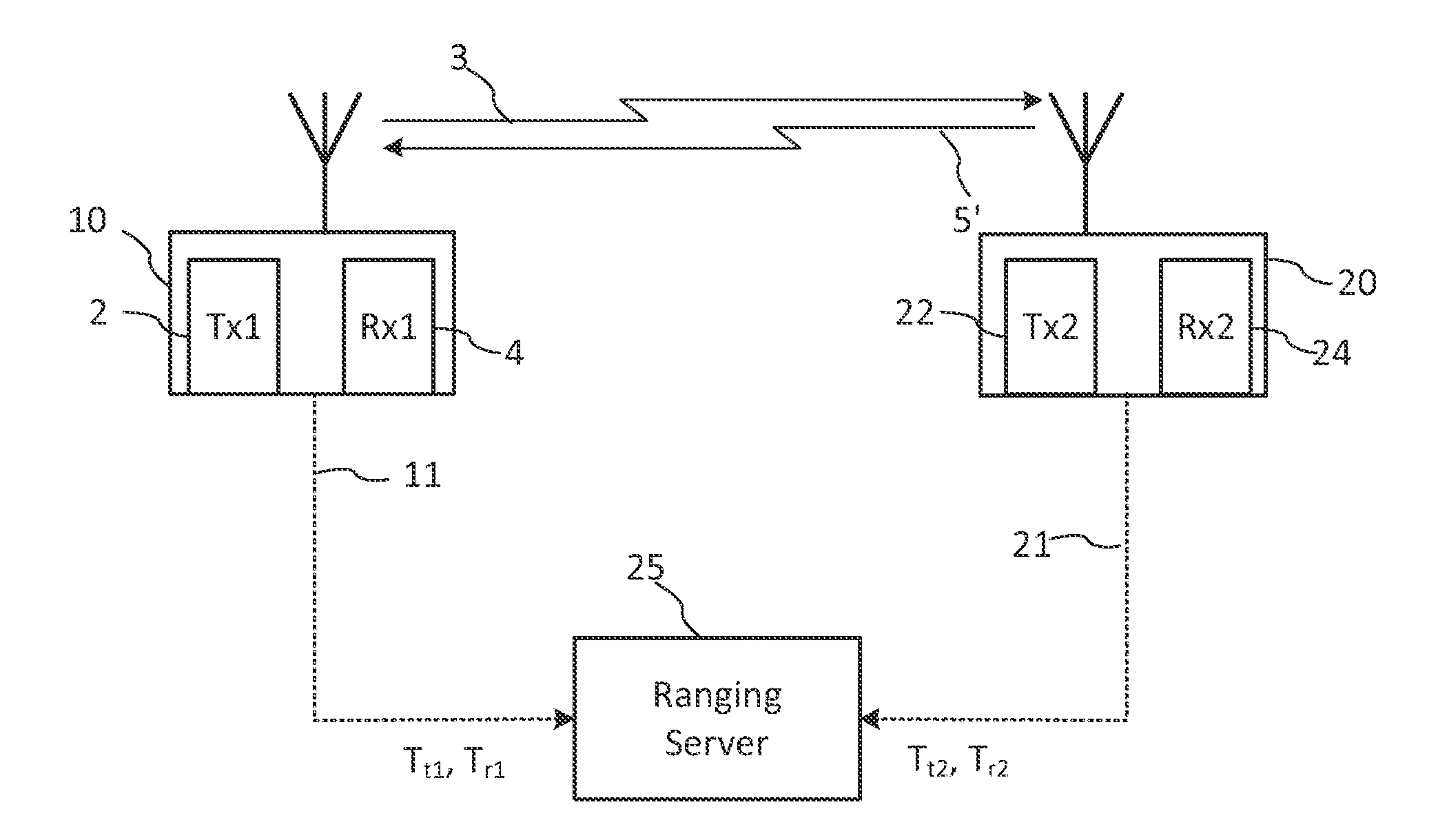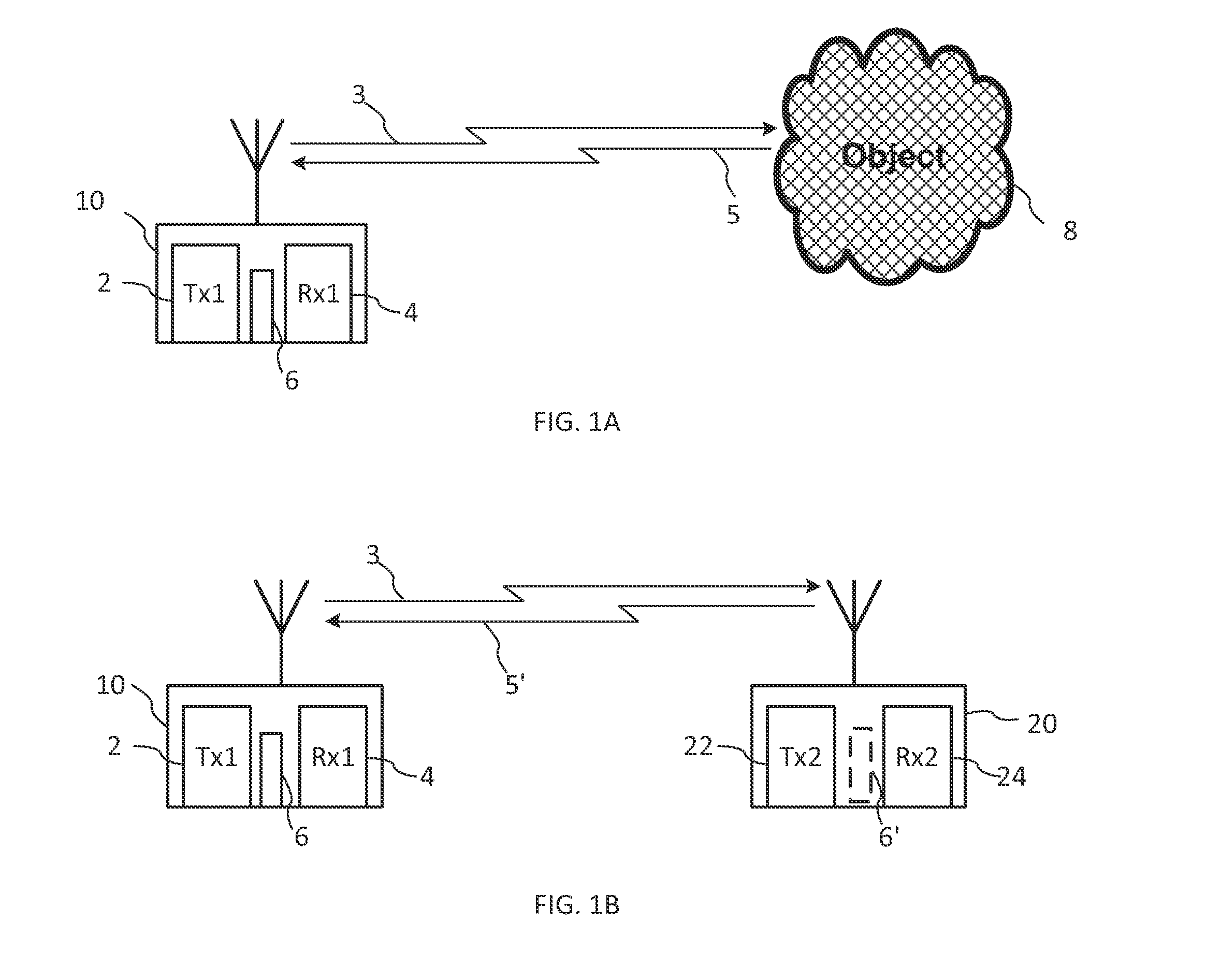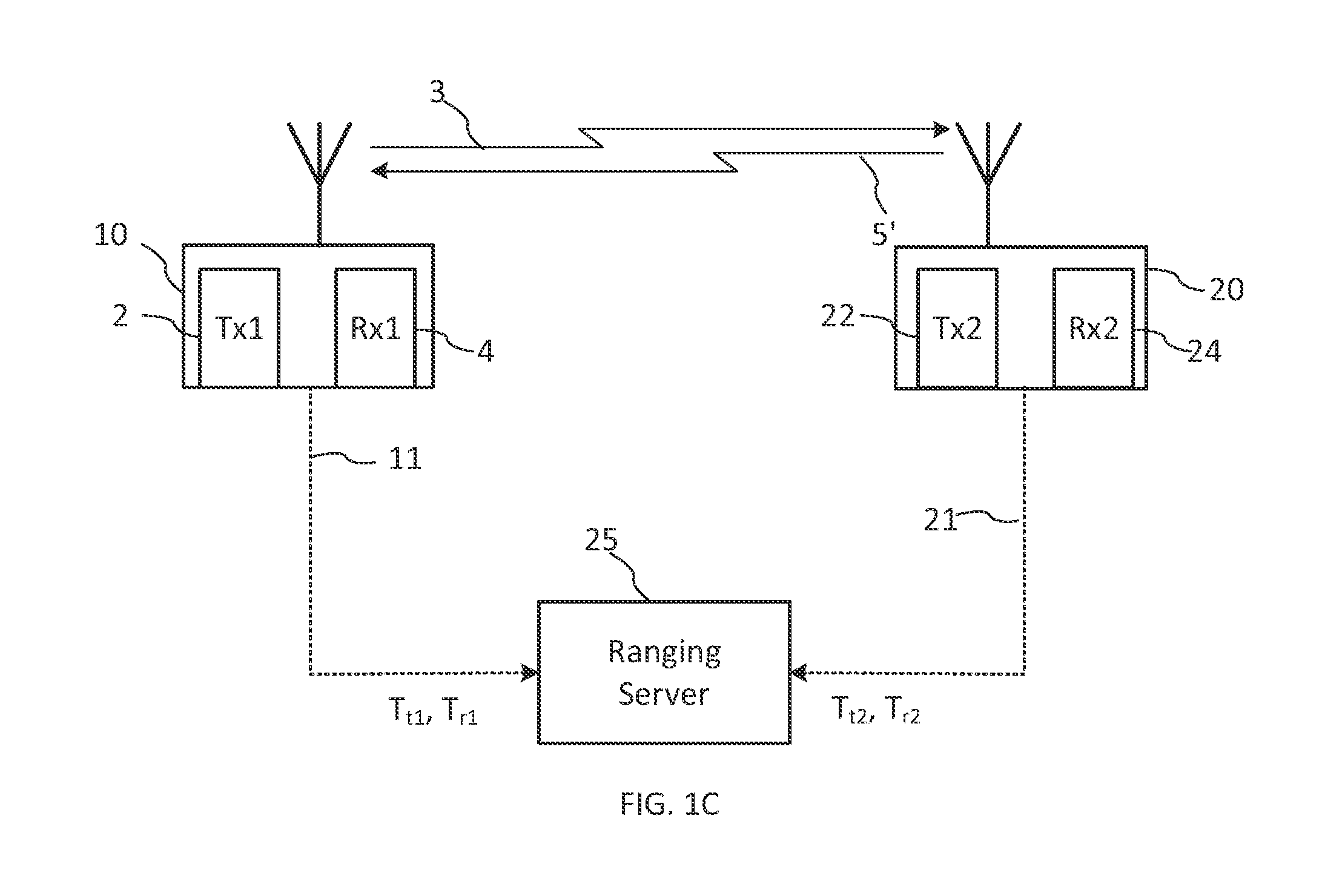High-resolution ranging and location finding using multicarrier signals
a multi-carrier signal, high-resolution technology, applied in the direction of frequency-division multiplex, data switching network, instruments, etc., can solve the problem of indoor reception of gps signals, limited accuracy of receiver timing offset, and typically not synchronized in time with sufficient accuracy
- Summary
- Abstract
- Description
- Claims
- Application Information
AI Technical Summary
Benefits of technology
Problems solved by technology
Method used
Image
Examples
Embodiment Construction
[0044]In the following description, reference is made to the accompanying drawings which form a part thereof and which illustrate several embodiments of the present invention. It is understood that other embodiments may be utilized and structural and operational changes may be made without departing from the scope of the present invention. The drawings include flowcharts and block diagrams. The functions of the various elements shown in the drawings may be provided through the use of analog RF circuitry and data processing hardware such as but not limited to dedicated logical circuits within a data processing device, as well as data processing hardware capable of executing software in association with appropriate software. When provided by a processor, the functions may be provided by a single dedicated processor, by a single shared processor, or by a plurality of individual processors, some of which may be shared. The term “processor” should not be construed to refer exclusively to...
PUM
 Login to View More
Login to View More Abstract
Description
Claims
Application Information
 Login to View More
Login to View More - R&D
- Intellectual Property
- Life Sciences
- Materials
- Tech Scout
- Unparalleled Data Quality
- Higher Quality Content
- 60% Fewer Hallucinations
Browse by: Latest US Patents, China's latest patents, Technical Efficacy Thesaurus, Application Domain, Technology Topic, Popular Technical Reports.
© 2025 PatSnap. All rights reserved.Legal|Privacy policy|Modern Slavery Act Transparency Statement|Sitemap|About US| Contact US: help@patsnap.com



